- Filter By:
-
-
Stock photos and images of username:kuremo

Futuristic architecture with mirroring and transparent blue plastic panels swiveling in Shibuya district in Dogenzaka street leading to Shibuya Crossing Intersection in front of Shibuya Station in a summer evening.
Editorial LicenseUsername
kuremoResolution
6362x4930pxFuturistic architecture with mirroring and transparent blue plastic panels swiveling in Shibuya district in Dogenzaka street leading to Shibuya Crossing Intersection in front of Shibuya Station in a summer evening.


Shopping street leading to Shibuya Crossing Intersection in front of Shibuya Station on a bright day blue sky.
Editorial LicenseUsername
kuremoResolution
5304x7952pxShopping street leading to Shibuya Crossing Intersection in front of Shibuya Station on a bright day blue sky.


TOKYO, JAPAN - August 21 2018: Futuristic architecture with mirroring panels swiveling in Shibuya district in Dogenzaka street leading to Shibuya Crossing Intersection in front of Shibuya Station in a summer evening.
Editorial LicenseUsername
kuremoResolution
7919x5286pxTOKYO, JAPAN - August 21 2018: Futuristic architecture with mirroring panels swiveling in Shibuya district in Dogenzaka street leading to Shibuya Crossing Intersection in front of Shibuya Station in a summer evening.


Shibuya Crossing Intersection in front of Shibuya Station on a bright day blue sky.
Editorial LicenseUsername
kuremoResolution
5171x7753pxShibuya Crossing Intersection in front of Shibuya Station on a bright day blue sky.


Futuristic architecture with mirroring and transparent blue plastic panels swiveling in Shibuya district in Dogenzaka street leading to Shibuya Crossing Intersection in front of Shibuya Station in a summer evening.
Editorial LicenseUsername
kuremoResolution
3713x5566pxFuturistic architecture with mirroring and transparent blue plastic panels swiveling in Shibuya district in Dogenzaka street leading to Shibuya Crossing Intersection in front of Shibuya Station in a summer evening.


Futuristic architecture with mirroring and transparent blue plastic panels swiveling in Shibuya district in Dogenzaka street leading to Shibuya Crossing Intersection in front of Shibuya Station in a summer evening.
Editorial LicenseUsername
kuremoResolution
4243x6362pxFuturistic architecture with mirroring and transparent blue plastic panels swiveling in Shibuya district in Dogenzaka street leading to Shibuya Crossing Intersection in front of Shibuya Station in a summer evening.


Futuristic architecture with mirroring panels swiveling in Shibuya district in Dogenzaka street leading to Shibuya Crossing Intersection in front of Shibuya Station in a summer evening.
Editorial LicenseUsername
kuremoResolution
5566x3713pxFuturistic architecture with mirroring panels swiveling in Shibuya district in Dogenzaka street leading to Shibuya Crossing Intersection in front of Shibuya Station in a summer evening.


Futuristic architecture with mirroring and transparent blue plastic panels swiveling in Shibuya district in Dogenzaka street leading to Shibuya Crossing Intersection in front of Shibuya Station in a summer evening.
Editorial LicenseUsername
kuremoResolution
3696x5543pxFuturistic architecture with mirroring and transparent blue plastic panels swiveling in Shibuya district in Dogenzaka street leading to Shibuya Crossing Intersection in front of Shibuya Station in a summer evening.


Red portal of the shopping street Hyakkendana located in a street adjacent to the Dogenzaka avenue which leads to the Shibuya Crossing Intersection in front of Shibuya Station on night. This street which was born in the 20's will become until the 70's the
Editorial LicenseUsername
kuremoResolution
7952x5304pxRed portal of the shopping street Hyakkendana located in a street adjacent to the Dogenzaka avenue which leads to the Shibuya Crossing Intersection in front of Shibuya Station on night. This street which was born in the 20's will become until the 70's the


Red paper lanterns of restaurant in the shopping street from the west exit of Kanda Station on the Yamanote Line. The street extends over 300 meters and has no less than 100 shops.
Editorial LicenseUsername
kuremoResolution
3722x2483pxRed paper lanterns of restaurant in the shopping street from the west exit of Kanda Station on the Yamanote Line. The street extends over 300 meters and has no less than 100 shops.


Blue metal entrance gate of the shopping street from the west exit of Kanda Station on the Yamanote Line. The street extends over 300 meters and has no less than 100 shops.
Editorial LicenseUsername
kuremoResolution
7952x5304pxBlue metal entrance gate of the shopping street from the west exit of Kanda Station on the Yamanote Line. The street extends over 300 meters and has no less than 100 shops.


Blue metal entrance gate of the shopping street decorated with flowers from the west exit of Kanda Station on the Yamanote Line. The street extends over 300 meters and has no less than 100 shops.
Editorial LicenseUsername
kuremoResolution
5304x7952pxBlue metal entrance gate of the shopping street decorated with flowers from the west exit of Kanda Station on the Yamanote Line. The street extends over 300 meters and has no less than 100 shops.


Blue metal entrance gate of the shopping street decorated with plants from the west exit of Kanda Station on the Yamanote Line. The street extends over 300 meters and has no less than 100 shops.
Editorial LicenseUsername
kuremoResolution
7096x4734pxBlue metal entrance gate of the shopping street decorated with plants from the west exit of Kanda Station on the Yamanote Line. The street extends over 300 meters and has no less than 100 shops.


Walls covered with foliage and Bignoniaceae flowers horn trumpet vine in a small alley adjacent to the Kanda Station on the Yamanote Line. The street extends over 300 meters and has 100 shops.
Editorial LicenseUsername
kuremoResolution
7952x5304pxWalls covered with foliage and Bignoniaceae flowers horn trumpet vine in a small alley adjacent to the Kanda Station on the Yamanote Line. The street extends over 300 meters and has 100 shops.


Walls covered with foliage and Bignoniaceae flowers horn trumpet vine in a small alley adjacent to the Kanda Station on the Yamanote Line. The street extends over 300 meters and has 100 shops.
Editorial LicenseUsername
kuremoResolution
8062x5412pxWalls covered with foliage and Bignoniaceae flowers horn trumpet vine in a small alley adjacent to the Kanda Station on the Yamanote Line. The street extends over 300 meters and has 100 shops.


Walls covered with foliage and Bignoniaceae flowers horn trumpet vine in a small alley adjacent to the Kanda Station on the Yamanote Line. The street extends over 300 meters and has 100 shops.
Editorial LicenseUsername
kuremoResolution
5304x7952pxWalls covered with foliage and Bignoniaceae flowers horn trumpet vine in a small alley adjacent to the Kanda Station on the Yamanote Line. The street extends over 300 meters and has 100 shops.


Blue metal entrance gate of the shopping street decorated with plants from the west exit of Kanda Station on the Yamanote Line. The street extends over 300 meters and has no less than 100 shops.
Editorial LicenseUsername
kuremoResolution
4901x7348pxBlue metal entrance gate of the shopping street decorated with plants from the west exit of Kanda Station on the Yamanote Line. The street extends over 300 meters and has no less than 100 shops.


Traditional wooden lantern and blue metal entrance gate of the shopping street from the west exit of Kanda Station on the Yamanote Line. The street extends over 300 meters and has no less than 100 shops, restaurants or pachinko.
Editorial LicenseUsername
kuremoResolution
7952x5305pxTraditional wooden lantern and blue metal entrance gate of the shopping street from the west exit of Kanda Station on the Yamanote Line. The street extends over 300 meters and has no less than 100 shops, restaurants or pachinko.


Blue metal entrance gate of the shopping street from the west exit of Kanda Station on the Yamanote Line. The street extends over 300 meters and has no less than 100 shops.
Editorial LicenseUsername
kuremoResolution
4922x7380pxBlue metal entrance gate of the shopping street from the west exit of Kanda Station on the Yamanote Line. The street extends over 300 meters and has no less than 100 shops.


Walls covered with foliage and Bignoniaceae flowers horn trumpet vine in a small alley adjacent to the Kanda Station on the Yamanote Line. The street extends over 300 meters and has 100 shops.
Editorial LicenseUsername
kuremoResolution
5214x7816pxWalls covered with foliage and Bignoniaceae flowers horn trumpet vine in a small alley adjacent to the Kanda Station on the Yamanote Line. The street extends over 300 meters and has 100 shops.


Traditional wooden lantern and blue metal entrance gate of the shopping street from the west exit of Kanda Station on the Yamanote Line. The street extends over 300 meters and has no less than 100 shops, restaurants or pachinko.
Editorial LicenseUsername
kuremoResolution
7952x5306pxTraditional wooden lantern and blue metal entrance gate of the shopping street from the west exit of Kanda Station on the Yamanote Line. The street extends over 300 meters and has no less than 100 shops, restaurants or pachinko.


Traditional wooden lantern and blue metal entrance gate of the shopping street from the west exit of Kanda Station on the Yamanote Line. The street extends over 300 meters and has no less than 100 shops, restaurants or pachinko.
Editorial LicenseUsername
kuremoResolution
7952x5304pxTraditional wooden lantern and blue metal entrance gate of the shopping street from the west exit of Kanda Station on the Yamanote Line. The street extends over 300 meters and has no less than 100 shops, restaurants or pachinko.


Underpass with metal pillar of the west entrance of Kanda Station on the Yamanote Line. The street extends over 300 meters and has no less than 100 shops.
Editorial LicenseUsername
kuremoResolution
7952x5304pxUnderpass with metal pillar of the west entrance of Kanda Station on the Yamanote Line. The street extends over 300 meters and has no less than 100 shops.


Blue metal entrance gate of the shopping street decorated with plants from the west exit of Kanda Station on the Yamanote Line. The street extends over 300 meters and has no less than 100 shops.
Editorial LicenseUsername
kuremoResolution
5304x7952pxBlue metal entrance gate of the shopping street decorated with plants from the west exit of Kanda Station on the Yamanote Line. The street extends over 300 meters and has no less than 100 shops.


Underpass with metal pillar and neon signs at the west entrance of Kanda Station on the Yamanote Line. The street extends over 300 meters and has no less than 100 shops.
Editorial LicenseUsername
kuremoResolution
7656x5107pxUnderpass with metal pillar and neon signs at the west entrance of Kanda Station on the Yamanote Line. The street extends over 300 meters and has no less than 100 shops.


Blue metal entrance gate and neon signs in the shopping street from the west exit of Kanda Station on the Yamanote Line. The street extends over 300 meters and has no less than 100 shops.
Editorial LicenseUsername
kuremoResolution
7952x5304pxBlue metal entrance gate and neon signs in the shopping street from the west exit of Kanda Station on the Yamanote Line. The street extends over 300 meters and has no less than 100 shops.


Underpass with metal pillar located on Tacho-o-dori Street at the west entrance of Kanda Station on the Yamanote Line. The street extends over 300 meters and has no less than 100 shops.
Editorial LicenseUsername
kuremoResolution
7952x5304pxUnderpass with metal pillar located on Tacho-o-dori Street at the west entrance of Kanda Station on the Yamanote Line. The street extends over 300 meters and has no less than 100 shops.


Underpass with metal pillar and blue entrance gate of Shopping street of the west exit of Kanda Station on the Yamanote Line. The street extends over 300 meters and has no less than 100 shops.
Editorial LicenseUsername
kuremoResolution
7947x6207pxUnderpass with metal pillar and blue entrance gate of Shopping street of the west exit of Kanda Station on the Yamanote Line. The street extends over 300 meters and has no less than 100 shops.


Night view of Marunouchi side of Tokyo railway station in the Chiyoda City, Tokyo, Japan. The station is divided into Marunouchi and Yaesu sides in its directional signage. The station first called Central Station was built in 1914 directly in front of t
Editorial LicenseUsername
kuremoResolution
4771x3182pxNight view of Marunouchi side of Tokyo railway station in the Chiyoda City, Tokyo, Japan. The station is divided into Marunouchi and Yaesu sides in its directional signage. The station first called Central Station was built in 1914 directly in front of t


Ceiling of the dome of the Marunouchi North exit of the Tôkyô station in Japan. On the lower octogon are represented eight signs of the zodiac with the exception of the Rabbit, the mouse, the horse and the rooster.
Editorial LicenseUsername
kuremoResolution
7952x5304pxCeiling of the dome of the Marunouchi North exit of the Tôkyô station in Japan. On the lower octogon are represented eight signs of the zodiac with the exception of the Rabbit, the mouse, the horse and the rooster.


Night view of Marunouchi side of Tokyo railway station in the Chiyoda City, Tokyo, Japan. The station is divided into Marunouchi and Yaesu sides in its directional signage. The station first called Central Station was built in 1914 directly in front of t
Editorial LicenseUsername
kuremoResolution
7918x5296pxNight view of Marunouchi side of Tokyo railway station in the Chiyoda City, Tokyo, Japan. The station is divided into Marunouchi and Yaesu sides in its directional signage. The station first called Central Station was built in 1914 directly in front of t


Night view of Marunouchi side of Tokyo railway station in the Chiyoda City, Tokyo, Japan. The station is divided into Marunouchi and Yaesu sides in its directional signage. The station first called Central Station was built in 1914 directly in front of t
Editorial LicenseUsername
kuremoResolution
7952x5304pxNight view of Marunouchi side of Tokyo railway station in the Chiyoda City, Tokyo, Japan. The station is divided into Marunouchi and Yaesu sides in its directional signage. The station first called Central Station was built in 1914 directly in front of t


Marunouchi side of Tokyo railway station in the Chiyoda City, Tokyo, Japan. The station is divided into Marunouchi and Yaesu sides in its directional signage. The station first called Central Station was built in 1914 directly in front of the Imperial Pa
Editorial LicenseUsername
kuremoResolution
5304x7952pxMarunouchi side of Tokyo railway station in the Chiyoda City, Tokyo, Japan. The station is divided into Marunouchi and Yaesu sides in its directional signage. The station first called Central Station was built in 1914 directly in front of the Imperial Pa
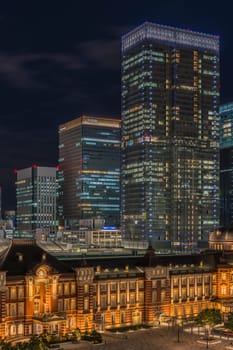

Panoramic night view of Marunouchi side of Tokyo railway station in the Chiyoda City, Tokyo, Japan. The station is divided into Marunouchi and Yaesu sides in its directional signage. The station first called Central Station was built in 1914 directly in
Editorial LicenseUsername
kuremoResolution
5166x3691pxPanoramic night view of Marunouchi side of Tokyo railway station in the Chiyoda City, Tokyo, Japan. The station is divided into Marunouchi and Yaesu sides in its directional signage. The station first called Central Station was built in 1914 directly in


Night view of Marunouchi side of Tokyo railway station in the Chiyoda City, Tokyo, Japan. The station is divided into Marunouchi and Yaesu sides in its directional signage. The station first called Central Station was built in 1914 directly in front of t
Editorial LicenseUsername
kuremoResolution
5534x3691pxNight view of Marunouchi side of Tokyo railway station in the Chiyoda City, Tokyo, Japan. The station is divided into Marunouchi and Yaesu sides in its directional signage. The station first called Central Station was built in 1914 directly in front of t


Night panoramic view of Marunouchi side of Tokyo railway station in the Chiyoda City, Tokyo, Japan. The station is divided into Marunouchi and Yaesu sides in its directional signage. The station first called Central Station was built in 1914 directly in
Editorial LicenseUsername
kuremoResolution
5566x3713pxNight panoramic view of Marunouchi side of Tokyo railway station in the Chiyoda City, Tokyo, Japan. The station is divided into Marunouchi and Yaesu sides in its directional signage. The station first called Central Station was built in 1914 directly in


Ceiling of the dome of the Marunouchi North exit of the Tôkyô station in Japan. At each end of the upper octagon an eagle looking to the left opens wide wings of 2.1m wingspan. On the lower one are represented eight signs of the zodiac with the exceptio
Editorial LicenseUsername
kuremoResolution
7616x7398pxCeiling of the dome of the Marunouchi North exit of the Tôkyô station in Japan. At each end of the upper octagon an eagle looking to the left opens wide wings of 2.1m wingspan. On the lower one are represented eight signs of the zodiac with the exceptio
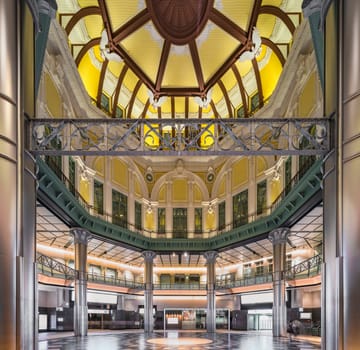

Night view of Marunouchi side of Tokyo railway station in the Chiyoda City, Tokyo, Japan. The station is divided into Marunouchi and Yaesu sides in its directional signage. The station first called Central Station was built in 1914 directly in front of t
Editorial LicenseUsername
kuremoResolution
6362x4243pxNight view of Marunouchi side of Tokyo railway station in the Chiyoda City, Tokyo, Japan. The station is divided into Marunouchi and Yaesu sides in its directional signage. The station first called Central Station was built in 1914 directly in front of t


Marunouchi side of Tokyo railway station in the Chiyoda City, Tokyo, Japan. The station is divided into Marunouchi and Yaesu sides in its directional signage. The station first called Central Station was built in 1914 directly in front of the Imperial Pa
Editorial LicenseUsername
kuremoResolution
7811x5581pxMarunouchi side of Tokyo railway station in the Chiyoda City, Tokyo, Japan. The station is divided into Marunouchi and Yaesu sides in its directional signage. The station first called Central Station was built in 1914 directly in front of the Imperial Pa


Night view of KITTE commercial facility building deployed by Japan Post in 2013, The GranTokyo and Pacific Century Place Marunouchi skyscrapers overlooking the railroad tracks of Tokyo Station. The GranTokyo building, whose first 14 storeys are occupied b
Editorial LicenseUsername
kuremoResolution
5182x7769pxNight view of KITTE commercial facility building deployed by Japan Post in 2013, The GranTokyo and Pacific Century Place Marunouchi skyscrapers overlooking the railroad tracks of Tokyo Station. The GranTokyo building, whose first 14 storeys are occupied b
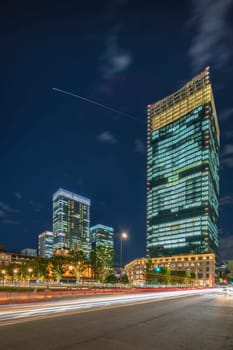
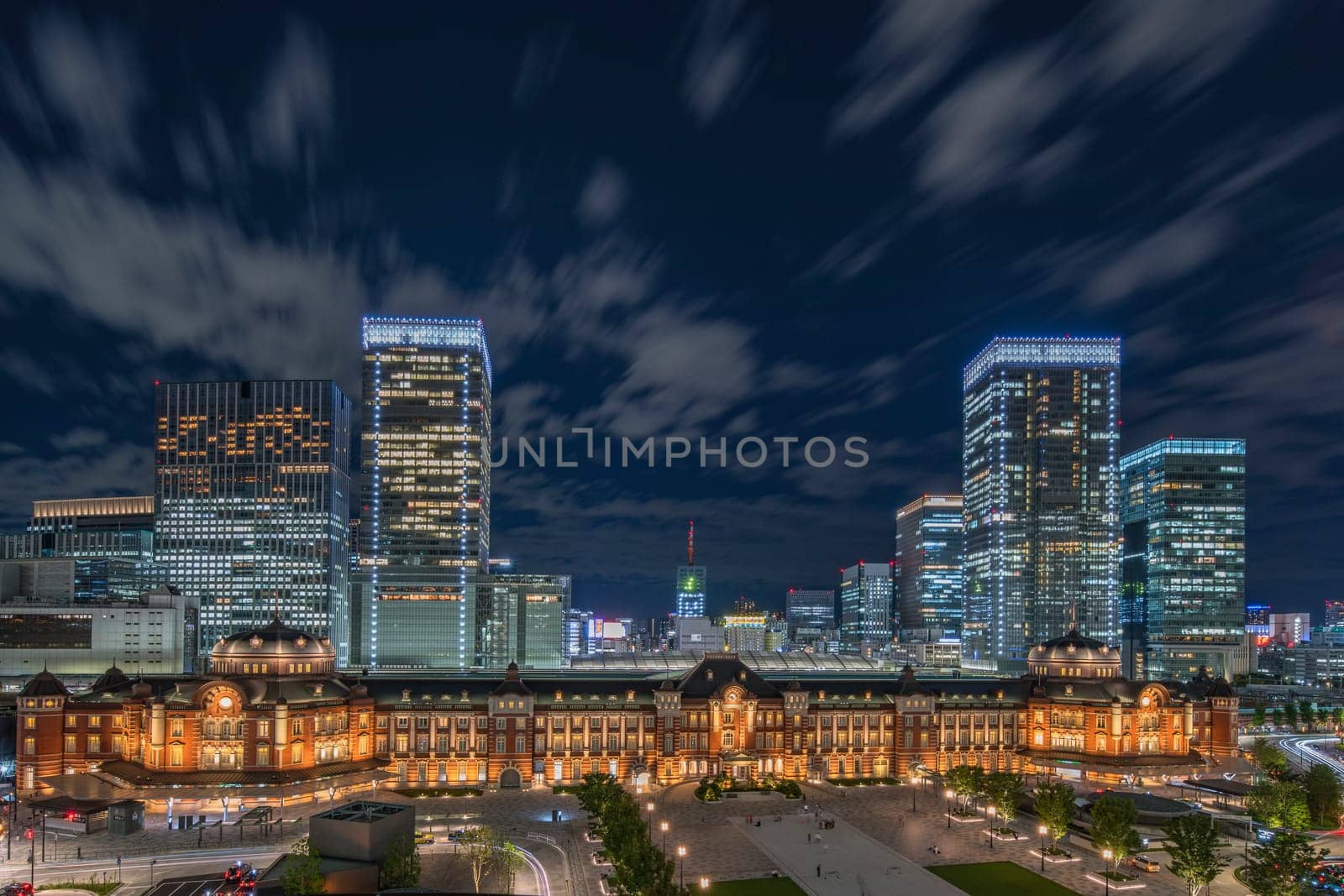
Night panoramic view of Marunouchi side of Tokyo railway station in the Chiyoda City, Tokyo, Japan. The station is divided into Marunouchi and Yaesu sides in its directional signage. The station first called Central Station was built in 1914 directly in
Editorial LicenseUsername
kuremoResolution
5566x3713pxNight panoramic view of Marunouchi side of Tokyo railway station in the Chiyoda City, Tokyo, Japan. The station is divided into Marunouchi and Yaesu sides in its directional signage. The station first called Central Station was built in 1914 directly in


Marunouchi side of Tokyo railway station in the Chiyoda City, Tokyo, Japan. The station is divided into Marunouchi and Yaesu sides in its directional signage. The station first called Central Station was built in 1914 directly in front of the Imperial Pa
Editorial LicenseUsername
kuremoResolution
4616x3502pxMarunouchi side of Tokyo railway station in the Chiyoda City, Tokyo, Japan. The station is divided into Marunouchi and Yaesu sides in its directional signage. The station first called Central Station was built in 1914 directly in front of the Imperial Pa
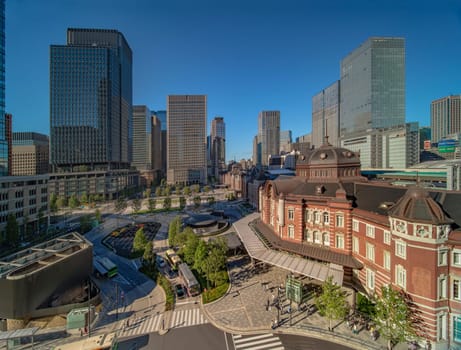

Night view on Marunouchi side of Tokyo railway station in the Chiyoda City, Tokyo, Japan. The station is divided into Marunouchi and Yaesu sides in its directional signage. The station first called Central Station was built in 1914 directly in front of t
Editorial LicenseUsername
kuremoResolution
7896x5266pxNight view on Marunouchi side of Tokyo railway station in the Chiyoda City, Tokyo, Japan. The station is divided into Marunouchi and Yaesu sides in its directional signage. The station first called Central Station was built in 1914 directly in front of t
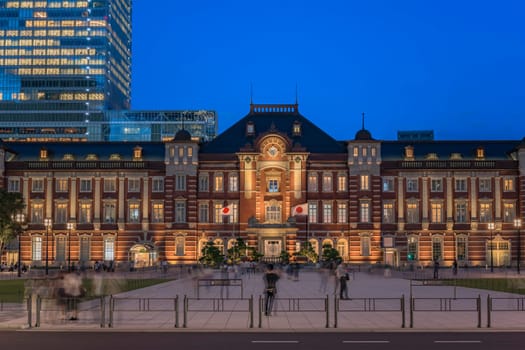

Night view of KITTE commercial facility building deployed by Japan Post in 2013, The GranTokyo and Pacific Century Place Marunouchi skyscrapers overlooking the railroad tracks of Tokyo Station. The GranTokyo building, whose first 14 storeys are occupied b
Editorial LicenseUsername
kuremoResolution
7538x5028pxNight view of KITTE commercial facility building deployed by Japan Post in 2013, The GranTokyo and Pacific Century Place Marunouchi skyscrapers overlooking the railroad tracks of Tokyo Station. The GranTokyo building, whose first 14 storeys are occupied b


Ceiling of the dome of the Marunouchi North exit of the Tôkyô station in Japan. At each end of the upper octagon an eagle looking to the left opens wide wings of 2.1m wingspan. On the lower one are represented eight signs of the zodiac with the exceptio
Editorial LicenseUsername
kuremoResolution
5304x7952pxCeiling of the dome of the Marunouchi North exit of the Tôkyô station in Japan. At each end of the upper octagon an eagle looking to the left opens wide wings of 2.1m wingspan. On the lower one are represented eight signs of the zodiac with the exceptio


Ceiling of the dome of the Marunouchi North exit of the Tôkyô station in Japan. At each end of the upper octagon an eagle looking to the left opens wide wings of 2.1m wingspan. On the lower one are represented eight signs of the zodiac with the exceptio
Editorial LicenseUsername
kuremoResolution
7686x5126pxCeiling of the dome of the Marunouchi North exit of the Tôkyô station in Japan. At each end of the upper octagon an eagle looking to the left opens wide wings of 2.1m wingspan. On the lower one are represented eight signs of the zodiac with the exceptio


The GranTokyo and Pacific Century Place Marunouchi skyscrapers overlooking the railroad tracks of Tokyo Station. The GranTokyo building, whose first 14 storeys are occupied by the Daimaru department store, is 205 meters high and was inaugurated in 2007. T
Editorial LicenseUsername
kuremoResolution
5304x7952pxThe GranTokyo and Pacific Century Place Marunouchi skyscrapers overlooking the railroad tracks of Tokyo Station. The GranTokyo building, whose first 14 storeys are occupied by the Daimaru department store, is 205 meters high and was inaugurated in 2007. T


Night view of the Shin Marunouchi Building at Marunouchi side of Tokyo railway station in the Chiyoda City, Tokyo, Japan. This commercial complex building often called "Shin Maru Biru"" for short was opened in 2007. It was designed by Hopkins Architects o"
Editorial LicenseUsername
kuremoResolution
5304x7952pxNight view of the Shin Marunouchi Building at Marunouchi side of Tokyo railway station in the Chiyoda City, Tokyo, Japan. This commercial complex building often called "Shin Maru Biru"" for short was opened in 2007. It was designed by Hopkins Architects o"


Marunouchi side of Tokyo railway station in the Chiyoda City, Tokyo, Japan. The station is divided into Marunouchi and Yaesu sides in its directional signage. The station first called Central Station was built in 1914 directly in front of the Imperial Pa
Editorial LicenseUsername
kuremoResolution
7807x5157pxMarunouchi side of Tokyo railway station in the Chiyoda City, Tokyo, Japan. The station is divided into Marunouchi and Yaesu sides in its directional signage. The station first called Central Station was built in 1914 directly in front of the Imperial Pa


Marunouchi side of Tokyo railway station in the Chiyoda City, Tokyo, Japan. The station is divided into Marunouchi and Yaesu sides in its directional signage. The station first called Central Station was built in 1914 directly in front of the Imperial Pa
Editorial LicenseUsername
kuremoResolution
8594x5930pxMarunouchi side of Tokyo railway station in the Chiyoda City, Tokyo, Japan. The station is divided into Marunouchi and Yaesu sides in its directional signage. The station first called Central Station was built in 1914 directly in front of the Imperial Pa

